- UPPER LEFT \ Yekutiel Shur (Bonia’s grandfather) and Ya’akov Shur (Bonia’s father)
- UPPER CENTER \ Ethel Shur (Bonia’s mother), 1930
- UPPER RIGHT \ Ya’akov Shur at age of 18, 1900
- LOWER CENTER \ Reiza-Mere (Bonia’s paternal grandmother)
- LOWER RIGHT \ Bonia’s father (second row to right)
- UPPER LEFT \ Bonia at the age of 3, 1926
- UPPER CENTER TO RIGHT \ Bonia in second grade (sitting second, from right to left), 1932
- LOWER LEFT TO CENTER \ Bonia’s family in Pogulanka, father Ya’akov (Yasha), mother Ethel, 1930
- LOWER RIGHT \ Bonia age 7, brother Yekutiel age 11
- UPPER LEFT \ Bonia and friends, Dvina River, Kraslavka; 1938
- UPPER CENTER \ Bonia playing the banjo in his parents’ bedroom, 1936
- LOWER ROW L TO R \ Bonia in Dvinsk, Latvia, Spring 1940 \ Daniel and Bonia, 1938 \ Bonia in Dvinsk, Latvia, Spring 1940 \ Bonia in Kreslavka, 1938 \ Yehuda Binder (madrich), Daniel and Bonia, 1938 \ Bonia in the backyard of his apartment, 1936
- UPPER LEFT \ Bonia (far right), National Tree Planting Day, Hebrew Gymnasium, 1940
- LOWER LEFT \ Mandolin orchestra organized and conducted by Yekutiel (Yekutiel seated second from right, Bonia seated far right), 1937
- CENTER \ Bonia’s group in Hashomer Hatzair. Summer camp 17 km from Dvinsk, 1937
- LOWER CENTER \ Members of Hashomer Hatzair (Bonia top row, second from right), 1939
- UPPER LEFT \ National Tree Planting Day. Hebrew Gymnasium, 1940
- LOWER LEFT TO CENTER \ Hebrew Gymnasium demonstration welcoming the invading Soviet Russian forces
- UPPER RIGHT \ Hashomer demonstration welcoming the invading Soviet Russian forces, 1940
- LOWER CENTER TO RIGHT \ Hebrew Gymnasium (Bonia in last row by door), 1940
- UPPER CENTER \ Bonia after being ill from typhus in Uzbekistan, January 1942
- LOWER LEFT \ Bonia as officer in the Russian Army, 1944
- LOWER CENTER \ Bonia as a Russian officer in Vienna, 1946
- UPPER CENTER TO RIGHT \ Bonia as a Russian officer in Vienna, 1946
- UPPER LEFT \ Bonia leading the parade in honor of May 1st celebration
- LOWER LEFT \ Partying in the shituv, the commune in Lodz (Bonia second from right, third from right)
- UPPER CENTER \ Fun picture with youth (Bonia at right), 1947
- LOWER CENTER \ Bonia in summer camp playing accordion, 1948
- RIGHT \ Nocham group picture (Bonia with guitar to right, Yekutiel to the left)
- UPPER LEFT TO CENTER \ Dancing in Poland, 1947
- LOWER CENTER TO RIGHT \ Gymnastics for physical education by group of Nocham
- UPPER ROW L TO R \ Bonia’s performing group in Poland, Jul 2nd 1946 \ Bonia in Munich, 1948 \ Refugee survivors from Latvia from Hashomer Hatzair in Poland \ At Marshal Gering’s farm
- LOWER LEFT TO CENTER\ Poland, Bonia and Yekutiel visiting with a Jew from Israel in British uniform
- LOWER CENTER TO RIGHT\ Bonia and friend in Munich, 1948
- LOWER RIGHT \ The ruins of the Warsaw Ghetto, April 1947
- UPPER LEFT \ Kvutzat Shiller choir premiering Bonia’s new work in honor of 25th anniversary
- UPPER CENTER \ Bonia in Israel, 1949
- UPPER CENTER TO RIGHT \ Bonia’s teacher and Israeli composer, Paul Ben Chaim and his wife, Helena
- LOWER LEFT TO CENTER, LOWER RIGHT \ Dance choreographed to Bonia’s music by Noah Rom
- UPPER LEFT \ Bonia in Tel Aviv
- UPPER RIGHT \ Nitza Shapiro is singing soloist in Concert in Jerusalem
- LOWER LEFT TO CENTER \ Bonia on Kibbutz Netzer Sereni, 1950
- LOWER CENTER TO RIGHT \ Bonia in apartment in kibbutz, 1955
- LOWER RIGHT \ Bonia conducting youth choir (150 people) in Tel Aviv, 1956
- UPPER LEFT \ Mediterranean Arts Chorale, 1964
- UPPER CENTER, LOWER LEFT \ Bonia in Los Angeles, Mediterranean Arts Chorale, 1966
- LOWER LEFT TO CENTER \ Mediterranean Arts Chorale Concert, 1964
- LOWER CENTER \ Bonia teaching at Camp Swig in California, 1965
- RIGHT \ Bonia in Los Angeles, Mid 1960s
- UPPER LEFT \ Bonia, Hebrew Union College
- UPPER TO LOWER CENTER \ Bonia, Hebrew Union College with ensemble
- LOWER LEFT TO CENTER \ Bonia, Cincinnati
- RIGHT \ Bonia and ensemble
- UPPER LEFT, RIGHT, LOWER RIGHT \ Temple de Hirsch, Seattle, Early 1970′s
- LOWER LEFT \ La Hakat Youth Ensemble at Temple de Hirsch, Seattle, Early 1970′s
- LOWER CENTER \ Temple de Hirsch, Seattle, 1971
- FROM LEFT TO RIGHT \ Indiana, 1975
- UPPER LEFT \ 6 days before the execution
- LOWER ROW L TO R \ Fife Scrolls Choral Concert, 1985 \ Bonia, Cincinnati, 2011 \ Bonia after Tribute concert in Cincinnati, 2010 \ Bonia after the Fife Scrolls concert \ Bonia and Alfred Gottschalk
- UPPER CENTER \ Indiana, 1975
- UPPER LEFT \ Fanchon and Bonia, early 1980s
- UPPER CENTER \ Fanchon and Bonia, 1988
- UPPER RIGHT \ Fanchon and Bonia, 1995
- LOWER LEFT TO CENTER \ “Thou Shalt Remember”, Passover Cantata with choreography, 1975
- LOWER CENTER \ “Thou Shalt Remember” Dance/Music performance at the Hebrew Union College, 1975
- LOWER RIGHT \ Fanchon and Bonia, Seattle, 1972
He would live a year of disease, poverty and hunger until his eventual draft into the Russian Red Army. Bonia became an officer and fought against the Nazis. His amazing tale of escape and army life was documented in a diary he wrote after WWII. After the war, Bonia was a part of the Allied Forces Occupation of Poland and Germany. Bonia returned to his Zionist activities with Nocham, an organization that prepared people to immigrate to Israel. Being so involved in the Zionist process, he organized a performing group of singers in which he played accordion, playing Israeli and Yiddish songs. Emissaries from Israel would come to encourage people to go to Israel. They brought new songs with them, thus inspiring Bonia with Israeli Culture.
During 1947-49, there were more than 200,000 Jews in displaced persons camps in Germany. Bonia and his group performed at these camps and encouraged people to go to Israel. In 1949, Bonia himself finally boarded a small freight plane to Israel, the Promised Land.
LATVIA, RUSSIA, GERMANY & POLAND
As a Jew growing up in Latvia Bonia became a member of the Hashomer Hatzair, a youth group based on the ideals and ideas of Zionism. The idea was to go to Israel and build collective settlements (Kibbutzim) and build the country. This was the motivating force that kept their spirits alive before and during World War II. The youth group would do Jewish activities and sing Israeli songs. Bonia and his family had a near escape of the Nazi invasion of Latvia. What ensued was a tale of survival of epic proportions. Bonia lived as refugee for a year, traveling as far as Uzbekistan.
In 1949, the kibbutz was commissioned by the Israel National Radio to create a Holocaust memorial broadcast about the uprising in Warsaw in 1944. Bonia organized a choir and composed a special piece, which was performed on the Israel National Radio. Bonia went to Tel Aviv to meet Nissim Nissimov, the head of the music committee of the labor organization (Histadrut). Nissimov recommended that Bonia study with Paul Ben Chaim, the leading composer of Israel at the time. Paul Ben Chaim knew that Bonia was untrained as a composer, but accepted him because of his musical instincts and melodic power. Bonia studied with him in Tel Aviv once a week for five hours a day for five years, making the half-day commute from the kibbutz.
In 1951, Bonia won first prize in the Nissimov Competition for young composers. In the same year he was commissioned to write a piece commemorating the celebration of the 25th anniversary of Kibbutz Kvutzat Shiller. The music consisted of a choral work and a dance suite choreographed by Noah Rom. He worked every day on this piece for six weeks, sleeping only two hours a night. This piece marked Bonia’s new style and sound, influenced almost predominantly by Israeli music and culture. Figuratively, this was the beginning of the Bonia’s recognizable independent style. In 1952, there was a conference of the Israeli Composers in Tel Aviv. The two trends of the time were either assimilating with the common trend of modernism or to preserve the uniqueness of the Mediterranean Israeli style and expand it, as represented by Paul Ben Chaim.
In 1953, there was a big event commemorating the anniversary of the youth movement of the labor organization Nachal, which took place in Bonia’s kibbutz. He wrote a large-scale piece for choir and symphonic orchestra. The orchestra was brought to Kibbutz Neitzer Sereni from Jerusalem for three days. More than 10,000 people from neighboring cities and kibbutzim attended the event. In his personal life, Bonia met his first wife Nitza Neiman, an American musician living in Israel. Bonia and Nitza had two children, Adda and Ophir.
ISRAEL
In Israel, Bonia joined Kibbutz Neitzer Sereni, where 80% of the members were concentration camp survivors. He decided to teach the Kibbutz members how to play mandolin and guitar so that he could start an orchestra. Bonia convinced the finance department of the kibbutz, which was not doing well economically, to buy instruments for 20 people to learn and eventually start an orchestra. Since most of the kibbutz members were Holocaust survivors, their spirits were very low. Bonia’s insistence to teach people how to play music lifted the morale and spirits of the kibbutz greatly.
LOS ANGELES
In 1960, after 11 years in Israel, Bonia went to Los Angeles with his wife and two children. He planned to stay for a year but met his present wife and collaborator Fanchon, a dancer and choreographer. This meeting changed his destiny forever once again and after five years they married and had their first child, Itaal. During his early years in Los Angeles Bonia wanted to continue his Mediterranean Israeli style because of his passion and his desire to stay unique amidst a world of cosmopolitan composers.
He studied composition at UCLA with Roy Harris and was commissioned in 1961 to compose the music to a play called “Each Had Six Wings”, which was performed in Los Angeles. In 1964, he founded the Mediterranean Arts Chorale, a group of 35 graduate students from UCLA who sang his music. The ensemble performed various concerts in California. In 1966, Bonia was commissioned to participate in the soundtrack to the film “The Russians Are Coming! The Russians Are Coming!”, directed by Norman Jewison, and nominated for four Academy Awards. His Mediterranean Arts Chorale performed the music in the film.
During the summers of 1965-1968, he constructed a Jewish music program at Camp Swig in Saratoga, California. Here he composed and created a new Jewish sound that would influence many of the future rabbis and musicians in the Jewish and liturgical world. He composed folk songs and art songs that worked well communally, thus setting the stage for his future talents of working with groups of musicians and non-musicians.
At Temple De Hirsch Sinai, the previous music director who had been there for 35 years left a legacy that was difficult to fill. Bonia, during the first year of this position, kept the traditional music as it was. Later, during the first High Holidays, he noticed that the music was antiquated and full of discrepancies between the text and the music. This inspired Bonia to compose his own High Holiday music and re-arrange some handpicked traditional selections that he thought fit. This marked the beginning of Bonia’s long career in liturgical music. Bonia began composing new pieces that interpreted the text of the prayer book in a new, fresh, and original way. Later, his music would spread all over the world and become the norm. He composed the Emmy Award-winning “Revolt in Mode’in (Hanukah Suite)”, which was performed and filmed in Seattle and broadcast on network television.
SEATTLE
In 1968, Rabbi Joe Glaser recommended Bonia to become the new musical director at Temple De Hirsch Sinai in Seattle Washington. During the interview, they asked Bonia if he was orthodox, conservative or reform Jew. He simply responded that he was a Jew. This was shocking to them, but in the end they accepted him. Bonia and family moved to Seattle and settled there for six years. Bonia and Fanchon’s second son, Limore, was born in Seattle soon after their arrival.
In addition to Bonia’s liturgical music career, he has composed orchestral music performed by the Minneapolis Chamber Symphony and the Cincinnati Chamber Symphony. His choral works have been performed and recorded by The Sarasota Choral Symphony Chorus, The Nova Singers of Florida and The Oshkosh Chamber Singers. Bonia’s music has been performed all around the world and many of his pieces have become standards in the liturgical repertoire. Bonia’s collaboration with his wife Fanchon Shur can be heard in many of her choreographies and performances. In addition, their collaboration has resulted in a musical/choreographic version of the Passover Hagaddah, various chants, and performance pieces for events. They invented a system of improvisation that can be taught using symbols. They have created performance/dance works that have included the audience as a participant, as well. Bonia and Fanchon have contributed much to the artistic and Jewish community in Cincinnati and beyond. Their long relationship of marriage and creativity stands as a testament to a very strong bond of love and inspiration.
On August 30th, 2012 Bonia transcended the confines of the physical body. He was ascending the steps of his office clutching the latest printing of his master work THE HALLEL PSALMS when an angel kissed him. He fell backwards and passed instantly. He always wanted to be living strong and doing his work until he could no more, and he did. He is remembered by all who know his music and his gregarious, loving, magnanimous and unique personality. This site will keep his fire alive long into the future where all who want to experience his music can.
CINCINNATI
In 1974, Bonia became Director of Liturgical Arts at Hebrew Union College in Cincinnati, Ohio. He was chosen out of many contestants for this coveted position. Bonia and family thus moved to Cincinnati, where he makes his home to the present day. 1975 marked the centennial of Hebrew Union College, for which Bonia was commissioned to write a special program of music. Two of his most celebrated pieces, “Kol Haneshamah” and “Ki’atah Ta’ir Neiri”, were performed at this centennial and have since been recorded and performed by countless choirs all over the world.
Bonia created a book called “The Music Companion” that had more than 180 traditional and contemporary (with some originals, as well) liturgical chants, songs and prayers that he taught to the rabbinic students. During the 1970s, he created a vocal/instrumental ensemble made up from the students at Hebrew Union College and the College Conservatory of Music in Cincinnati that performed his originals and arrangements every Saturday for Shabbat services at HUC. This ensemble was new to the synagogue experience. The ensemble consisted of flute, oboe, clarinet, organ or piano, double bass and five singers.During his time at HUC, generations of future rabbis were greatly influenced by Bonia’s music and teachings and in turn brought them to their future synagogues. For the ordination, Bonia put together a spectacular program of original and arranged music, which included brass, woodwinds and choir. He developed a new era of Jewish music with his innovations that fused the Mediterranean tradition and his own unique style.
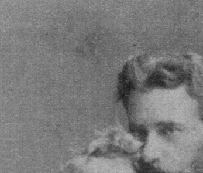



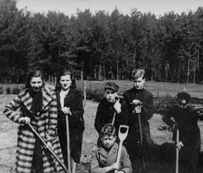

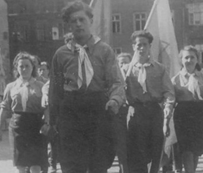

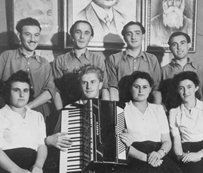
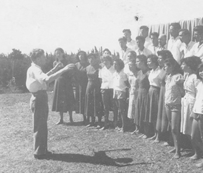


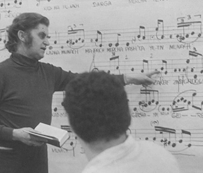


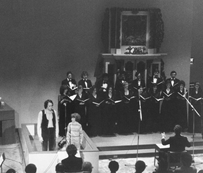

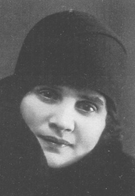





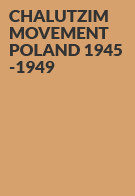

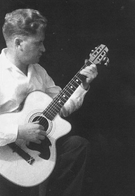
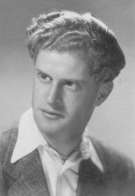

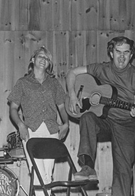

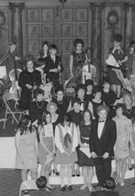


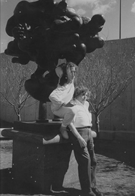
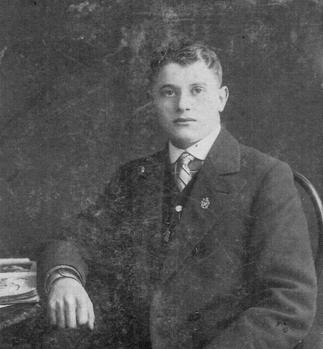



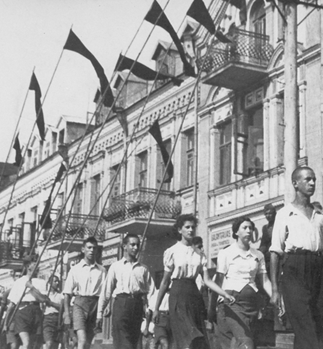

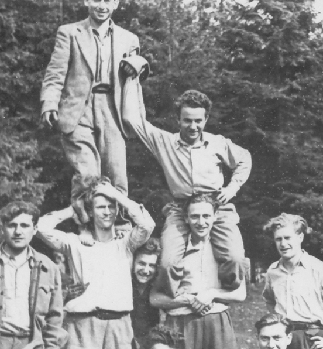
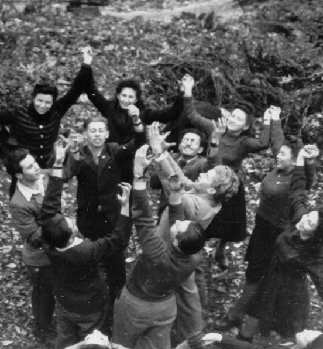
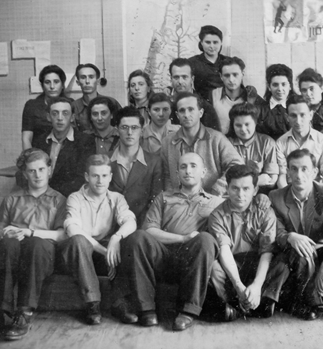






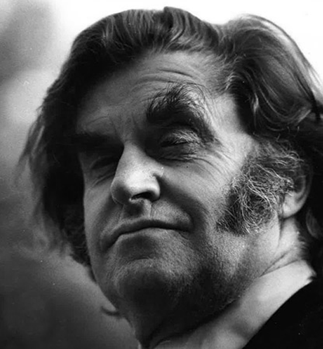









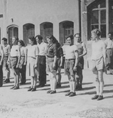
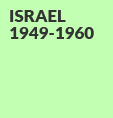



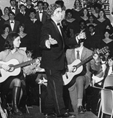


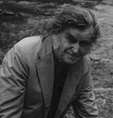

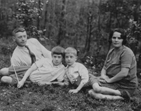
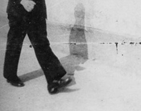

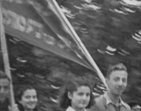




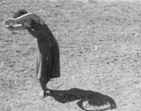


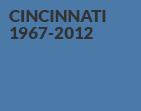
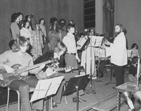




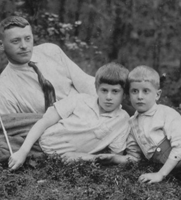
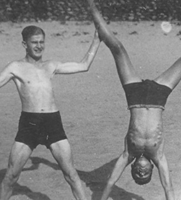

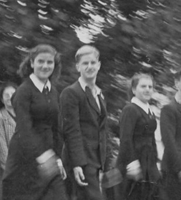
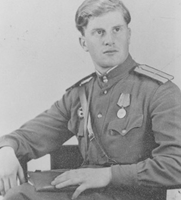
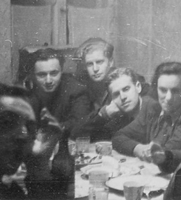

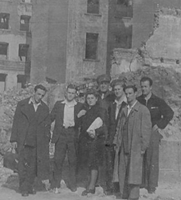

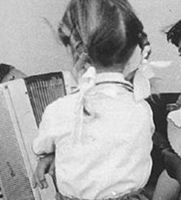

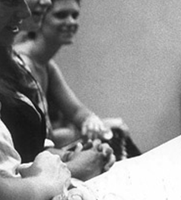
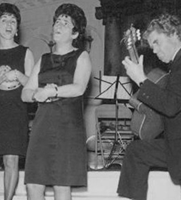
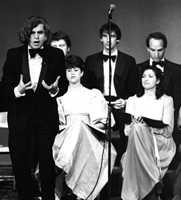
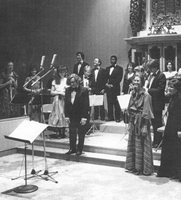



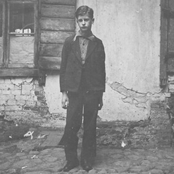



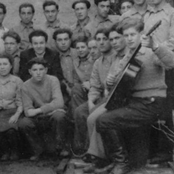

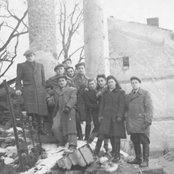
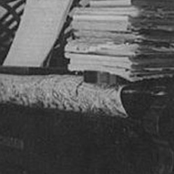


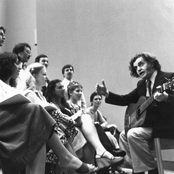

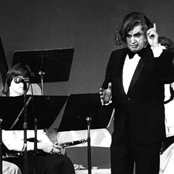

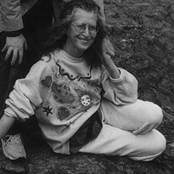
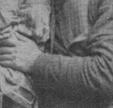



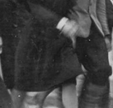
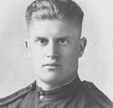



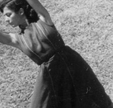
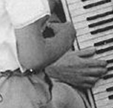

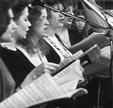





























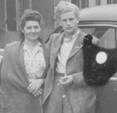




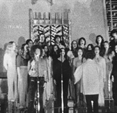



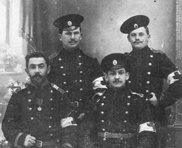

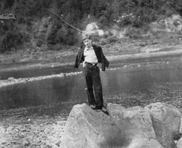
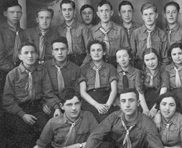



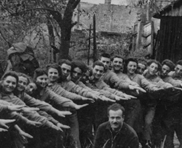
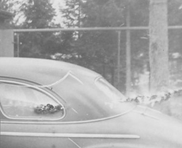

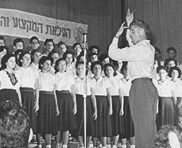
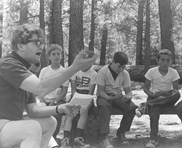


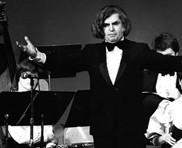
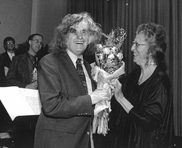
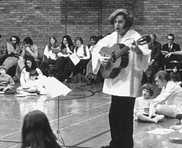

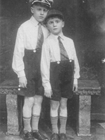
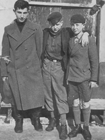
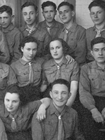
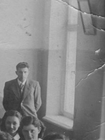

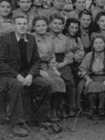


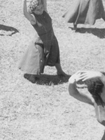

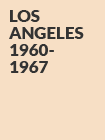



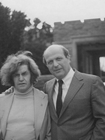

Share